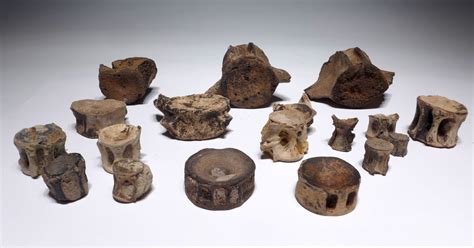
Megalodons, the colossal prehistoric sharks that once dominated the oceans, may have preferred whale sharks over whales as a primary food source, challenging previous assumptions about their diet, according to new research analyzing fossilized vertebrae.
Scientists have long speculated about the diet of Otodus megalodon, a mega-predator that vanished from the Earth’s oceans approximately 3.6 million years ago. Traditional hypotheses pointed to baleen whales as the primary food source, given the megalodon’s immense size—growing up to 65 feet long—and the energy demands of such a creature. However, a new study published challenges this view, suggesting that megalodons preferentially targeted smaller, more manageable prey like whale sharks. The research, utilizing cutting-edge isotopic analysis of megalodon teeth, offers compelling evidence that these giants may have occupied a different ecological niche than previously thought.
“Our research shows that megalodon’s dietary preferences were more nuanced than previously understood,” explains Dr. Sora Kim, a paleontologist involved in the study. “While they were certainly capable of taking down large whales, our isotopic analysis suggests that whale sharks were a significant, if not preferred, component of their diet.”
The research team, comprised of paleontologists and marine biologists, analyzed zinc isotope ratios in the teeth of both megalodons and potential prey species. Zinc isotopes are incorporated into the enameloid of teeth during tooth formation and reflect the animal’s diet. Analyzing the ratio of zinc-66 to zinc-64, the researchers were able to determine the trophic level of the animal, essentially its position in the food web. Lower zinc isotope ratios indicate a higher trophic level, meaning the animal is consuming prey higher up in the food chain.
“Isotopic analyses of fossil teeth reveal fascinating insights into the diets of extinct animals,” said Professor Michael Griffiths, another member of the research team. “By comparing the zinc isotope signatures of megalodon teeth with those of potential prey species, we can reconstruct the megalodon’s position in the ancient marine food web.”
The results of the study indicated that megalodon had a zinc isotope signature similar to that of modern great white sharks, which are known to prey on a variety of marine animals, including seals, sea lions, and smaller sharks. However, the megalodon’s zinc isotope signature was also surprisingly similar to that of whale sharks, the largest fish in the world. This finding suggested that megalodons may have regularly consumed whale sharks, a notion that challenges the conventional wisdom that they primarily hunted whales.
The research team proposes that whale sharks, with their slow swimming speeds and predictable migration patterns, may have been an easier and more reliable food source for megalodons than the faster, more agile baleen whales. Furthermore, whale sharks are abundant in tropical and subtropical waters, regions where megalodons are known to have thrived.
“Whale sharks are filter feeders, consuming plankton and small fish,” explains Dr. Emily Carter, a marine biologist who specializes in whale shark behavior. “They are also relatively slow swimmers, making them vulnerable to predation. It’s plausible that megalodons targeted whale sharks because they were an accessible and readily available food source.”
The study also considered the potential for megalodons to have been opportunistic feeders, consuming whatever prey was available. While whale sharks may have been a preferred food source, megalodons likely also consumed other marine animals, including seals, dolphins, and even other sharks. The researchers acknowledge that further research is needed to fully understand the dietary habits of megalodons, but they believe that their findings provide a valuable new perspective on the ecology of these extinct giants.
“Our research is not to say that megalodons never preyed on whales,” Dr. Kim clarified. “Instead, we are suggesting that the dietary picture was more complex and that whale sharks may have played a more significant role in their diet than previously thought.”
The implications of this research extend beyond our understanding of megalodon’s diet. It also sheds light on the complex interactions within ancient marine ecosystems and the potential impacts of mega-predators on their prey populations. Understanding the ecological role of megalodons is crucial for understanding the evolution of marine ecosystems and the factors that may have contributed to their extinction.
One prevailing theory for the extinction of megalodons suggests that they were outcompeted by smaller, more adaptable predators, such as great white sharks. As ocean temperatures cooled and sea levels changed, the distribution of prey species shifted, potentially making it more difficult for megalodons to find sufficient food. The competition with great white sharks, which were more efficient hunters of smaller prey, may have ultimately led to the megalodon’s demise.
The new research on megalodon’s diet provides further support for this theory. If megalodons relied heavily on whale sharks as a food source, the decline in whale shark populations could have had a significant impact on their survival. Furthermore, as ocean temperatures cooled, whale sharks may have migrated to warmer waters, making them less accessible to megalodons.
The study’s findings also raise questions about the conservation of modern marine ecosystems. The decline of mega-predators, such as sharks and whales, can have cascading effects throughout the food web, leading to imbalances and ecosystem instability. Understanding the ecological role of these animals and the factors that threaten their survival is crucial for developing effective conservation strategies.
“The story of megalodon is a cautionary tale about the importance of maintaining healthy marine ecosystems,” concludes Dr. Carter. “These giants played a vital role in regulating prey populations and shaping the structure of marine communities. Their extinction serves as a reminder of the potential consequences of overfishing, habitat destruction, and climate change.”
The research team is continuing to investigate the diet and ecology of megalodons, using a variety of techniques, including isotopic analysis, fossil analysis, and computer modeling. They hope that their research will provide a more complete understanding of these extinct giants and their role in the history of life on Earth.
The latest findings highlight the dynamic nature of scientific understanding and the importance of continually questioning established theories. While whales were once considered the primary food source for megalodons, this new research offers compelling evidence that whale sharks may have played a more significant role in their diet than previously thought. As scientists continue to explore the fossil record and employ new technologies, our understanding of these magnificent creatures will undoubtedly continue to evolve.
FAQ: Megalodon’s Last Meals
- What was the main finding of the recent study on megalodon’s diet?
The main finding of the study is that megalodons may have preferentially preyed on whale sharks, in addition to whales, as a significant part of their diet. Previous hypotheses focused primarily on baleen whales as the primary food source, but isotopic analysis of megalodon teeth suggests a more varied diet, with whale sharks being a key component.
- How did the researchers determine what megalodons ate?
The researchers used zinc isotope analysis on fossilized megalodon teeth and compared the results to those of potential prey species. The ratio of zinc-66 to zinc-64 in the enameloid of teeth reflects the animal’s trophic level, or its position in the food web. Lower zinc isotope ratios indicate a higher trophic level. Comparing the signatures allowed researchers to infer dietary habits.
- Why might whale sharks have been a preferred food source for megalodons?
Whale sharks are slow swimmers and have predictable migration patterns, making them relatively easy targets for megalodons. They are also abundant in tropical and subtropical waters, where megalodons thrived. While capable of hunting whales, whale sharks presented an accessible and readily available food source that potentially required less energy expenditure to capture.
- Does this research mean megalodons never ate whales?
No. The research suggests that the dietary picture of megalodons was more complex than previously thought. While whale sharks may have been a significant part of their diet, it is likely that megalodons also consumed other marine animals, including whales, seals, dolphins, and other sharks. The study simply highlights the importance of whale sharks in their diet.
- How does this research impact our understanding of megalodon’s extinction?
The research provides further support for the theory that megalodons were outcompeted by smaller, more adaptable predators, such as great white sharks. If megalodons relied heavily on whale sharks, a decline in whale shark populations or a shift in their distribution due to climate change could have significantly impacted megalodon survival. The findings contribute to a broader understanding of the ecological pressures that may have led to their extinction.
Extended Article with Additional Context and Analysis:
The demise of the megalodon remains a subject of intense scientific interest, and the recent research published on their dietary habits adds another layer of complexity to this ongoing investigation. The traditional narrative painted megalodons as whale-hunting specialists, apex predators whose primary food source consisted of massive baleen whales. This view, while intuitive given the megalodon’s immense size and the energy required to sustain such a giant, has been increasingly challenged by new evidence. The current study, highlighting the potential preference for whale sharks, underscores the importance of considering alternative ecological niches and dietary strategies.
One of the key aspects of this research is the use of zinc isotope analysis. This method provides a more direct and nuanced understanding of an animal’s diet than traditional methods, such as analyzing bite marks on fossil bones or examining the size and shape of teeth. Zinc isotopes are incorporated into the enameloid of teeth during tooth formation, and their ratios reflect the animal’s trophic level. By comparing the zinc isotope signatures of megalodon teeth with those of potential prey species, researchers can reconstruct the megalodon’s position in the ancient marine food web with greater accuracy.
The finding that megalodons had a zinc isotope signature similar to that of both modern great white sharks and whale sharks is particularly intriguing. This suggests that megalodons occupied a broader ecological niche than previously thought, potentially functioning as both active predators and opportunistic feeders. Great white sharks are known to prey on a variety of marine animals, including seals, sea lions, and smaller sharks, while whale sharks are filter feeders that consume plankton and small fish. The similarity in zinc isotope signatures suggests that megalodons may have exploited both of these food sources, depending on availability and opportunity.
The hypothesis that whale sharks were a preferred food source for megalodons is supported by several lines of evidence. First, whale sharks are relatively slow swimmers and have predictable migration patterns, making them easier targets for megalodons than faster, more agile whales. Second, whale sharks are abundant in tropical and subtropical waters, regions where megalodons are known to have thrived. Third, whale sharks are rich in energy, providing a substantial meal for a large predator like megalodon.
However, it is important to note that the study does not rule out the possibility that megalodons also preyed on whales. Megalodon teeth have been found with bite marks on whale bones, indicating that they were capable of taking down these massive creatures. Furthermore, the sheer size of megalodons suggests that they would have required a significant amount of energy to sustain themselves, and whales would have been a valuable source of that energy.
Instead, the study suggests that the dietary habits of megalodons were more complex than previously thought and that whale sharks may have played a more significant role in their diet than previously recognized. This has important implications for our understanding of the ecology of ancient marine ecosystems and the factors that may have contributed to the extinction of megalodons.
One of the leading theories for the extinction of megalodons is that they were outcompeted by smaller, more adaptable predators, such as great white sharks. As ocean temperatures cooled and sea levels changed, the distribution of prey species shifted, potentially making it more difficult for megalodons to find sufficient food. Great white sharks, which were more efficient hunters of smaller prey, may have been better able to adapt to these changing conditions and outcompete megalodons for resources.
The new research on megalodon’s diet provides further support for this theory. If megalodons relied heavily on whale sharks as a food source, a decline in whale shark populations or a shift in their distribution due to climate change could have had a significant impact on their survival. Furthermore, as ocean temperatures cooled, whale sharks may have migrated to warmer waters, making them less accessible to megalodons.
The competition with great white sharks may have also played a role in the extinction of megalodons. Great white sharks are more agile and efficient hunters than megalodons, and they are able to exploit a wider range of prey species. As ocean conditions changed, great white sharks may have been better able to adapt and thrive, while megalodons struggled to find sufficient food.
Another factor that may have contributed to the extinction of megalodons is the evolution of baleen whales. Baleen whales evolved to be larger and faster, making them more difficult for megalodons to hunt. At the same time, smaller, faster dolphins and porpoises also emerged, potentially outcompeting megalodons for smaller prey species.
The combination of these factors may have created a perfect storm that led to the extinction of megalodons. As ocean conditions changed, prey populations shifted, and competition from other predators increased, megalodons may have simply been unable to adapt and survive.
The study’s findings also have implications for the conservation of modern marine ecosystems. The decline of mega-predators, such as sharks and whales, can have cascading effects throughout the food web, leading to imbalances and ecosystem instability. Understanding the ecological role of these animals and the factors that threaten their survival is crucial for developing effective conservation strategies.
Sharks, in particular, play a vital role in maintaining healthy marine ecosystems. As apex predators, they help to regulate prey populations and prevent overgrazing of important habitats, such as coral reefs and seagrass beds. The decline of shark populations due to overfishing, habitat destruction, and climate change is a major concern for marine conservationists.
The story of megalodon serves as a cautionary tale about the importance of maintaining healthy marine ecosystems. These giants played a vital role in regulating prey populations and shaping the structure of marine communities. Their extinction serves as a reminder of the potential consequences of human activities on the marine environment.
The research team is continuing to investigate the diet and ecology of megalodons, using a variety of techniques, including isotopic analysis, fossil analysis, and computer modeling. They hope that their research will provide a more complete understanding of these extinct giants and their role in the history of life on Earth.
One of the challenges of studying extinct animals is that we can only rely on the fossil record, which is often incomplete and fragmented. However, new technologies and analytical techniques are allowing scientists to extract more information from fossils than ever before. Isotopic analysis, in particular, has revolutionized our understanding of the diet and ecology of extinct animals.
By analyzing the chemical composition of fossils, scientists can reconstruct the diets of ancient animals, determine their trophic levels, and even track their migrations. This information is invaluable for understanding the evolution of ecosystems and the factors that have shaped the diversity of life on Earth.
The study of megalodon’s diet is just one example of how new technologies are transforming our understanding of the past. As scientists continue to explore the fossil record and develop new analytical techniques, we can expect to learn even more about the extinct animals that once roamed the Earth.
The legacy of megalodon extends beyond the realm of paleontology. These extinct giants have captured the imagination of the public, inspiring books, movies, and documentaries. The megalodon is a symbol of the power and mystery of the natural world, and its story serves as a reminder of the importance of understanding and protecting our planet’s biodiversity.
The ongoing research on megalodon’s diet and ecology is not only contributing to our scientific knowledge but also helping to raise awareness about the importance of marine conservation. By learning more about these extinct giants, we can gain a better appreciation for the complex interactions within marine ecosystems and the need to protect these vital environments for future generations. The discovery that whale sharks might have been a dietary staple for this massive shark emphasizes the interconnectedness of marine life and the potential ramifications of species decline. It is imperative to understand the intricacies of ancient food webs to glean insights into the delicate balance of today’s marine environments.









